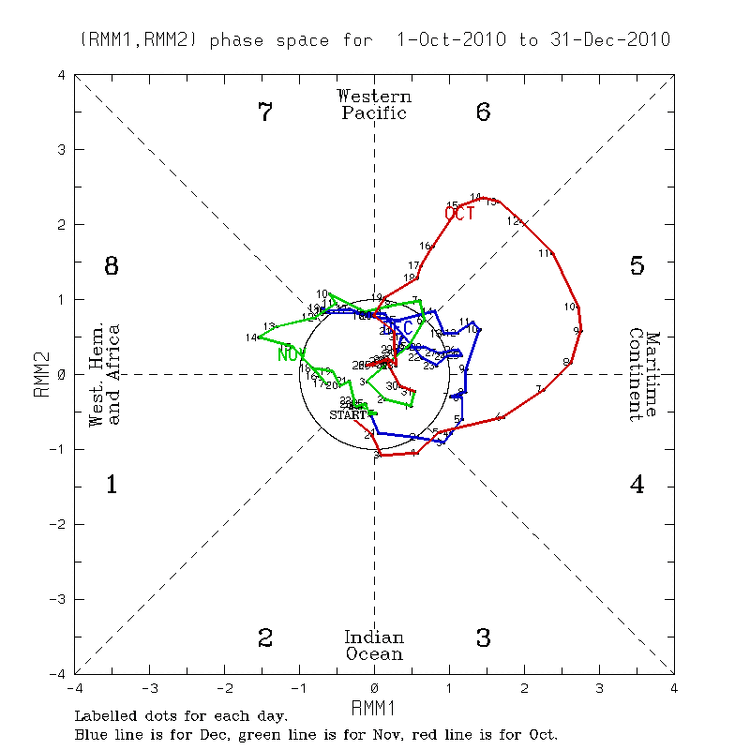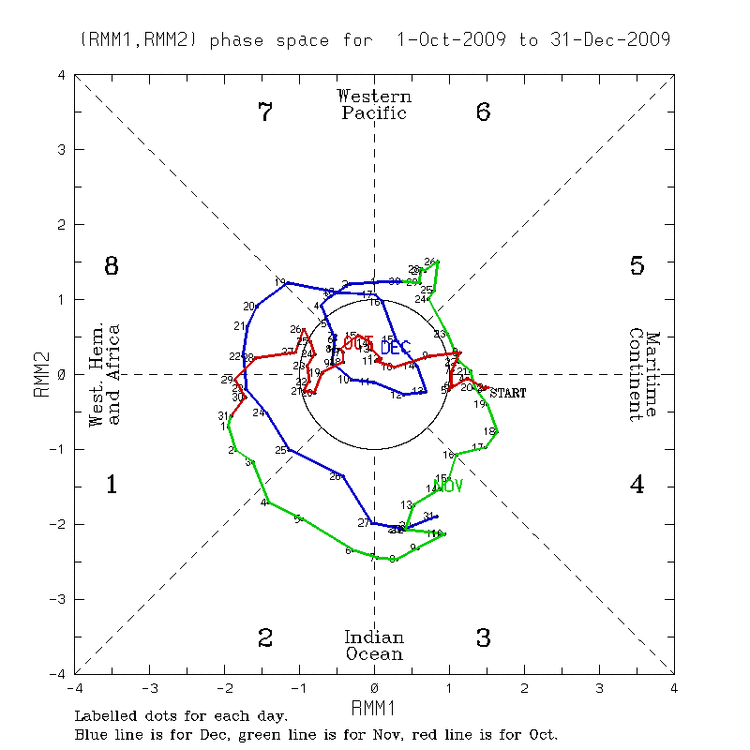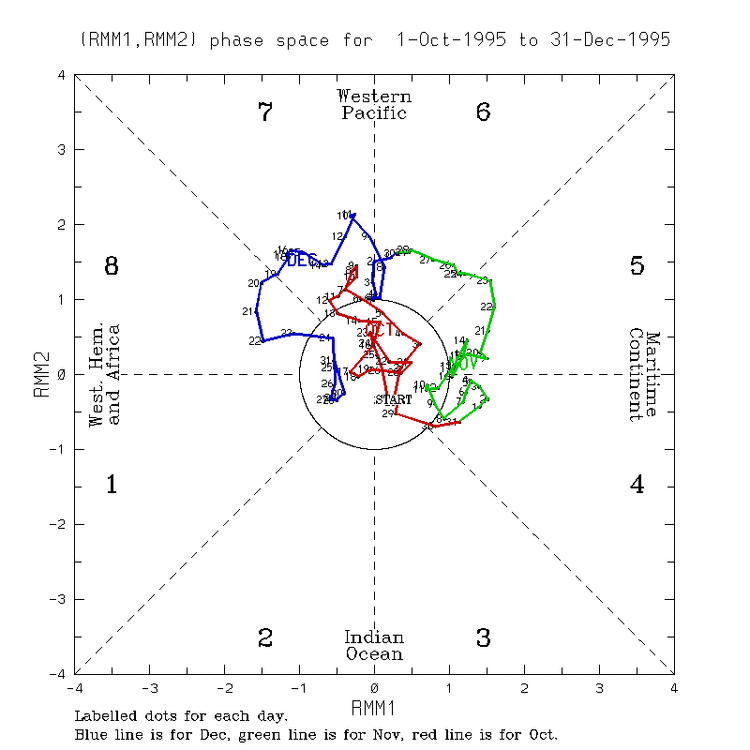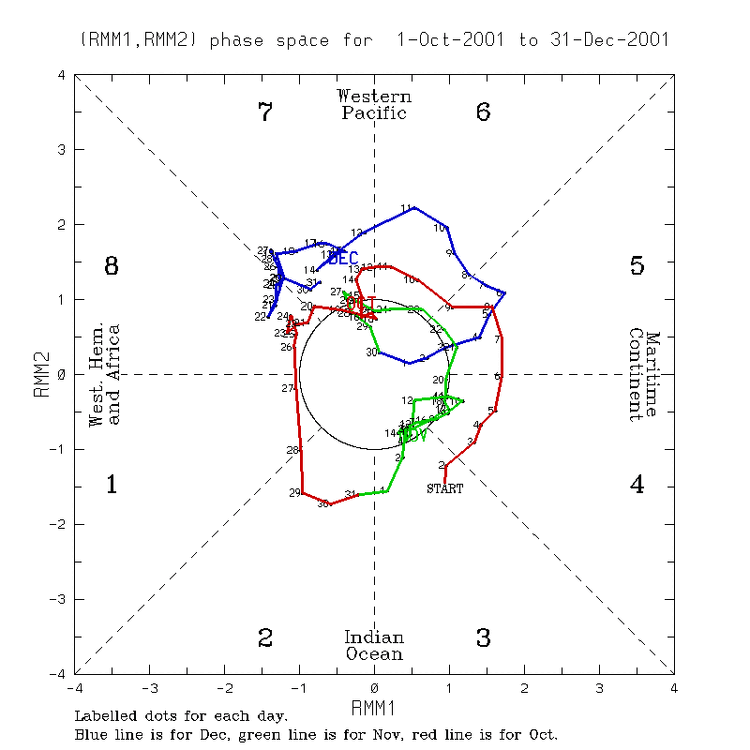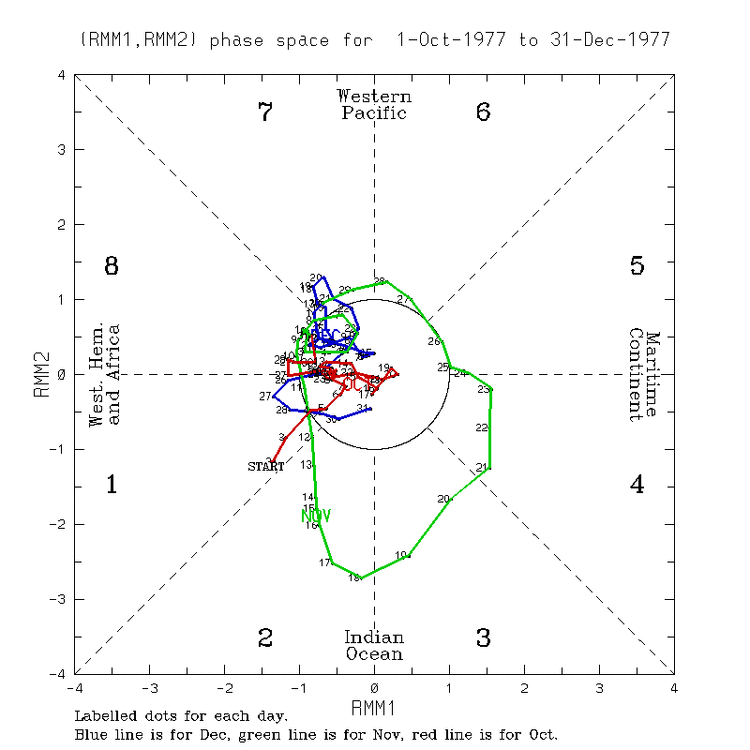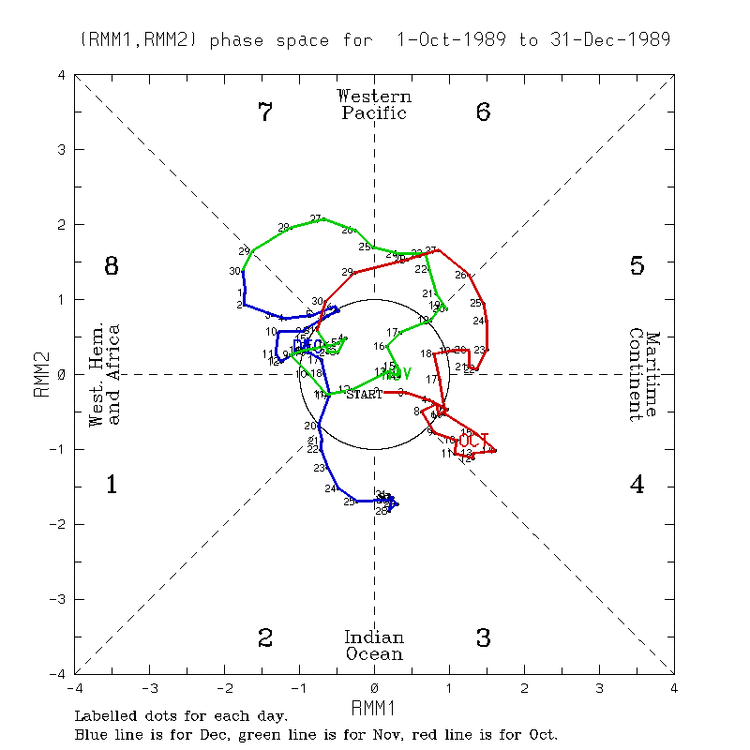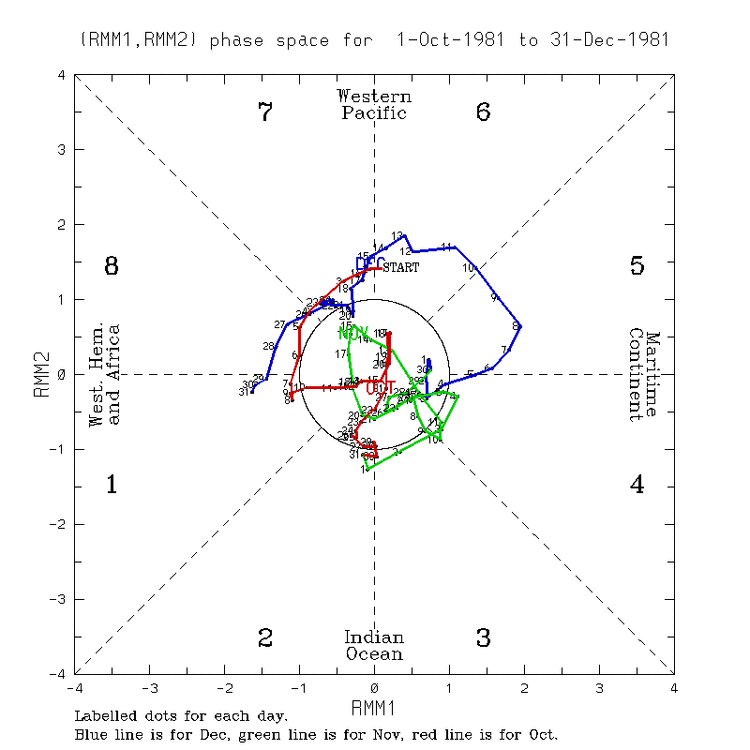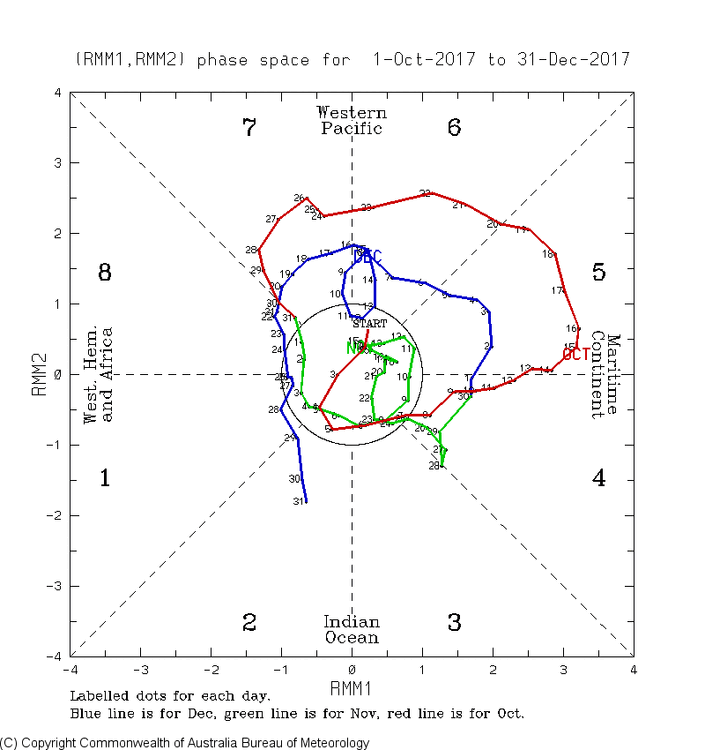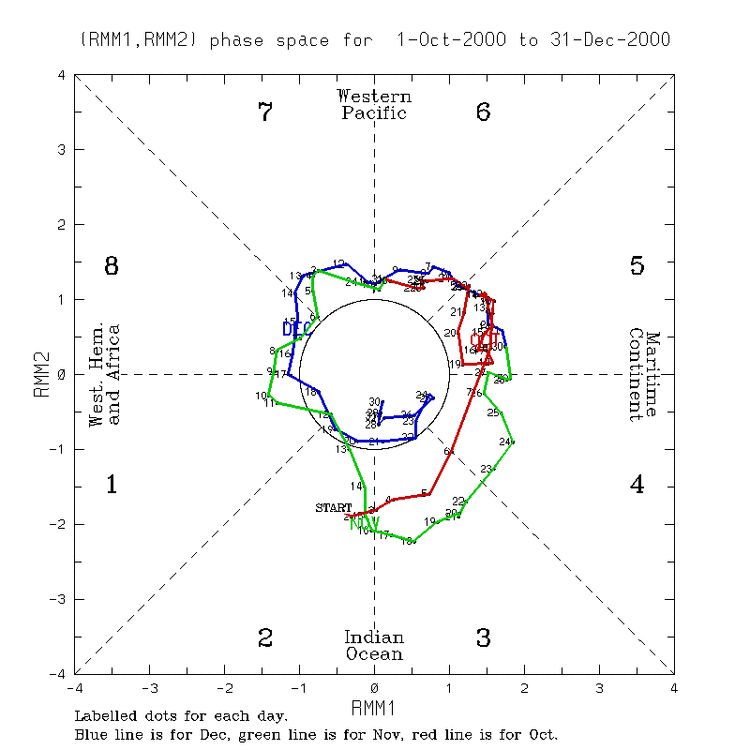
GaWx
Members-
Posts
17,441 -
Joined
Content Type
Profiles
Blogs
Forums
American Weather
Media Demo
Store
Gallery
Everything posted by GaWx
-
I’d call it average. At Baltimore since 1974 during 3+ day long phase 7 periods during Dec (32 of them adding to 185 days), they’ve averaged 0.5 F warmer than normal with the coolest tending to be somewhat weak and warmest tending to be somewhat strong though with much variation. The range during La Niña has been as cold as 11 BN (12/16-20/2010), 7 BN (12/9-10/1995), and 5 BN (12/9-11/2017) to as warm as 13 AN (12/28-31/2024) and 7 AN (12/19-31/2021). Breakdown of these 13 phase 7 periods during La Niña in Dec: 1 MB, 4 B, 2 N, 5A, 1 MA
-
That’s pretty amazing considering that Brooksville, FL, got down to an incredible 27 on Nov 12th!! Here’s where Brooksville is located, well on down into C FL! To be fair though, elevations are 100-180 feet, quite high for FL.
-
Today’s Euro Weeklies 2m temp anomalies vs prior run in E US Dec 1-7: slightly cooler NE US but still mild overall Mid-Atlantic and especially SE/warmest week of Dec Dec 8-14: NE cooled slightly from slightly AN to NN but SE ~same Dec 15-21: slightly warmer SE (was NN); ~same NE Dec22-28: slightly warmer but still coldest week of Dec
-
~Dec 14-16th is my hope for a change to cold domination in most of the E US based on the MJO being progged to then get into 8 and allowing ~2.5 weeks following an SSWE to start a cold dominated pattern in the E US. In the meantime, the weekend after Thanksgiving giving has cooled a lot and looks a bit chilly as of now vs having looked mild just 3 days ago.
-
This only recently seen on the models cold shot is for the weekend after Thanksgiving. So, this is technically during the last days of Nov. Then I still expect a mainly mild first half of Dec. while the MJO crosses 7 and we wait to see what the SSWE does just afterward. Of course expectations and reality sometimes don’t match well.
-
That’s quite the cooldown! The EPS has also cooled down over the last 48 hours of runs for the weekend after Thanksgiving though not to as cold as GEFS.
-
MJO model progs: -11/18 GEFS/EPS runs similar to yesterday day by day along with good progression into 7(GEFS) and well into 7 (EPS). -11/17 extended EPS remains consistent with recent runs with it getting into 8 on 12/14. But the big news is that the extended GEFS is its most progressive yet and with it actually moving into 8 a day earlier than the EPS (12/13). At RDU/BWI since 1974 for the 23 three+ day long Dec phase 8 periods averaged out: lots of variation but with solid tendencies -78%/61% of Dec phase 8 were cold -Compare that to only 22%/13% that were mild -Phase 8’s three+ day long periods have averaged 5 days with the longest being 13 days -Phases 1 and 2 have also averaged cold at BWI but with again lots of variation but with solid tendencies Based on all of this as well as a typical couple of weeks+ lag of cold in the E US after an SSWE, I’m hoping for E US cold domination to start around Dec 15th. Until then, I expect mild to dominate much of the E US, especially mid-Atlantic south. 11/17 GEFS extended: 11/17 EPS extended:
-
To me, NYC has a very snowy climate. Then again, my avg annual snow is only 0.2” with most winters getting none. My area hasn’t received a foot+ of snow for an entire season since 1800. I’ve also lived in Atlanta, where their avg is still “only” 2”. So, when I see a city’s average at 20”+, ten+ times as much as ATL and 100+ times as much as SAV, that there is very snowy! Atlanta’s never even gotten close to 20” in a season! Aside: Cloudflare problems had been causing widespread outages this morning, including here.
-
From JB today: Euro MJO closest analogs 1983 and 1989 The severe cold Decembers of 1983 and 1989 both raise the spectre of a cold shot letting loose into the Texas Citrus areas, with Fla secondary concern had a major stratwarm in mid to late November, almost identical to now —————- The only problem with this is that there was no major stratwarm in mid to late Nov of 1983 or 1989 or anytime during early to mid winter for both for that matter: https://www.researchgate.net/figure/The-SSW-and-SFW-event-onset-date-year-and-type-identified-in-the-NCEP-NCAR-dataset-The_tbl1_267063738 ———- Also, I checked to see if the 60-90N temperatures in the strat. in mid to late Nov were notably warm and they weren’t. Lastly, I checked the zonal winds at 60N in both Novs to see if they were weak despite no actual reversal. They weren’t as they were pretty close to normal. https://acd-ext.gsfc.nasa.gov/Data_services/met/ann_data.html#ncep_clim_stats_nh
-
This is by a good margin the weakest SPV on any run. If this verifies closely, this would be the weakest late Nov to early Dec SPV by a good margin since way back in 1987! We know that one month later there was a historic SE winter storm, which gave Atlanta 4” of sleet, very heavy snowfall in some other areas, and ZR down all of the way down here.
-
Per this EW run’s weekly 2m maps directly from the source, it remains a step down process from a mild E US start: Dec 1-7: mild Dec 8-14: cools some to slightly mild to normal Dec 15-21: cools to normal Dec 22-28: cold comes in around Christmas!
-
I still wouldn’t give up on a net neutral NAO (between -0.25 and +0.25) DJF averaged out, especially because of the very weak SPV to start. Although solid +NAOs have been dominant recently other than 20-21 (near minimum), there was a net neutral NAO DJF during the weak SPV, -ENSO, active solar winters in 2000-1 and 2001-2.
-
That’s honestly nearly impossible to predict with much confidence. But I’d lean toward at least a slightly warmer than avg Dec overall, especially this far south, due to the expected mild start.
-
Anthony, 1. Where are you seeing a weak phase 7 being forecasted? The GEFS and EPS haven’t been and still aren’t. 2. I’m well south of the Mason Dixon line. As I said, I was giving you my perspective. A prevailing SE ridge is typically mild in the SE other than when there’s strong low level CAD. I prefer it not be mild. I prefer BN temps year round. Even NN would be ok. At the very least I like to see comfy dewpoints, especially in winter! I hate sweating during winter walks because it’s so humid much of rest of year. 3. I continue to expect a mainly mild lower Mid Atlantic and especially SE the next 4 weeks as is clearly shown by a good # of Euro Weeklies runs. 4. But as you said, we shall see!
-
Hey Anthony, What’s wrong from my perspective? prevailing SE ridge/-PNA. The MJO is then forecasted by GEFS to be strong near phase 6/7 border, which is typically mild in the E US. Strong phase 7s in Dec have often been mild in the E US. A big key will be whether or not it eventually makes it to phase 8 like the extended EPS has been showing. There’s been only ONE 3+ day Dec MJO phase 8 period the last 15 Decembers!
-
11/17/25 MJO forecasts is mixed bag: 1) 11/17/25 GEFS backtracked to ~2 days slower than yesterday’s slightly more progressive/weaker run to being nearly identical to the more lethargic and stronger run of 11/15 (not what I wanted to see): GEFS 11/17: stronger/less progressive vs GEFS 11/16 and close to GEFS 11/15 GEFS 11/16: was slightly more progressive/weaker than GEFS 11/15 GEFS 11/15: ————— 2) However, 11/17/25 EPS remains similar to yesterday’s slightly more progressive run and continues to be a good bit more progressive/weaker than GEFS, two things I like: 11/17 EPS: similar to 11/16 EPS and more progressive/weaker than 11/17 GEFS 11/16 EPS: slightly more progressive than 11/15 EPS 11/15 EPS:
-
1. AAM is now dropping back from neutral and is forecasted to be in a solid -AAM (solid Ninaish) through the next 30 days per this CFS ens run: 2. WCS daily PDO has risen steeply the last 6 days and is up to -0.83, the highest daily since May:
-
This shows that the Euro is now leaning toward that later period for the actual reversal (~11/28 instead of 11/25). Add in a several week lag and a potential of a phase 8 MJO followed hopefully by 1-2 and we’d have a realistic chance for a several week long period of cold domination in the E US starting as early as near mid-Dec. Prior to this potential, there’d also likely be a mild dominated next 30 days, which shouldn’t be ignored.
-
Followup: here’s the average temp. anomaly of all Decs, Jans, and Febs for -ENSO winters since 1983-4 with a -PNA in Dec: Dec (all had -PNA with avg. -0.99): slightly warmer than normal E US (most pronounced SE) and very cold N Plains/Rockies: Jan (all had +PNA with avg. +0.76): slightly colder than Dec Chicago S and E but N Plains/Rockies not as cold: Feb (all 11 PNAs dropped back down with Feb avg. PNA of -0.19): other than GA-TX, this is easily the warmest of 3 months averaged out in the E 2/3 of US with warmest SC to NE:
-
Today’s 2 week GEFS and EPS showed slight improvement vs yesterday regarding progression when comparing the same days into phase 7: 1. GEFS: Yesterday’s GEFS: Today’s GEFS: 2. EPS: Yesterday’s EPS: Today’s EPS:
-
I just looked up -ENSO winters with a -PNA in Dec to see how often it went to a +PNA in Jan. In what winters did this occur? -1954-5: -0.52 to +0.40 -1962-3: -0.08 to +0.58 -1983-4: -0.31 to +0.97 -1984-5: -1.60 to +1.63 -1996-7: -1.23 to +0.63 -1998-9: -0.09 to +0.16 -2008-9: -1.41 to +0.61 -2010-11: -1.78 to +1.29 -2012-3: -1.01 to +0.55 -2013-4: -0.86 to +0.97 -2016-7: -0.35 to +0.28 -2021-2: -2.56 to +1.01 -2022-3: -0.66 to +0.22 So, although it wasn’t common from 1954-5 through 1971-2, when only 2 of 9 (22%) switched, here’s something that just blew my mind: -ALL 11 -ENSO -PNA Decs since 1983-4 switched to +PNA Jans (listed above)! -These 11 averaged +0.76 in January! -Now, check out the -ENSO Jan PNAs since 1983-4 that had a +PNA in Dec: 1) 1985-6 went from +1.39 to +0.97 2) 1988-9 went from +0.63 to -0.72 3) 1995-6 went from +0.92 to -0.02 4) 1999-00 went from +0.21 to -0.82 5) 2000-01 went from +1.23 to +1.51 6) 2001-2 went from +0.56 to -0.04 7) 2005-6 went from +1.38 to -0.43 8) 2007-8 went from +0.14 to -0.32 9) 2011-2 went from +0.36 to +0.60 10) 2017-8 went from +0.89 to +0.40 11) 2020-1 went from +1.58 to +0.19 12) 2024-5 went from +1.70 to +1.05 -So, for these 12 -ENSO Decs since 1983-4 with a +PNA, only 50% also had a +PNA in Jan. -So, since 1983-4, whereas only 50% of the 12 -ENSO Decs with a +PNA also had a Jan +PNA, 100% of the 11 -ENSO Decs with a -PNA in Dec went to a +PNA in Jan! Thus, having a -PNA in Dec during -ENSO since 1983-4 has, if anything, meant a big increase in the chance for a +PNA in Jan whether random or not! I didn’t know this til just now. Link to monthly PNAs back to 1950: https://www.cpc.ncep.noaa.gov/products/precip/CWlink/pna/norm.pna.monthly.b5001.current.ascii.table @donsutherland1
-
I just looked up -ENSO winters with a -PNA in Dec to see how often it went to a +PNA in Jan. In what winters did this occur? -1954-5: -0.52 to +0.40 -1962-3: -0.08 to +0.58 -1983-4: -0.31 to +0.97 -1984-5: -1.60 to +1.63 -1996-7: -1.23 to +0.63 -1998-9: -0.09 to +0.16 -2008-9: -1.41 to +0.61 -2010-11: -1.78 to +1.29 -2012-3: -1.01 to +0.55 -2013-4: -0.86 to +0.97 -2016-7: -0.35 to +0.28 -2021-2: -2.56 to +1.01 -2022-3: -0.66 to +0.22 So, although it wasn’t common from 1954-5 through 1971-2, when only 2 of 9 (22%) switched, here’s something that just blew my mind: -ALL 11 -ENSO -PNA Decs since 1983-4 switched to +PNA Jans (listed above)! -These 11 averaged +0.76 in January! -Now, check out the -ENSO Jan PNAs since 1983-4 that had a +PNA in Dec: 1) 1985-6 went from +1.39 to +0.97 2) 1988-9 went from +0.63 to -0.72 3) 1995-6 went from +0.92 to -0.02 4) 1999-00 went from +0.21 to -0.82 5) 2000-01 went from +1.23 to +1.51 6) 2001-2 went from +0.56 to -0.04 7) 2005-6 went from +1.38 to -0.43 8) 2007-8 went from +0.14 to -0.32 9) 2011-2 went from +0.36 to +0.60 10) 2017-8 went from +0.89 to +0.40 11) 2020-1 went from +1.58 to +0.19 12) 2024-5 went from +1.70 to +1.05 -So, for these 12 -ENSO Decs since 1983-4 with a +PNA, only 50% also had a +PNA in Jan. -So, since 1983-4, whereas only 50% of the 12 -ENSO Decs with a +PNA also had a Jan +PNA, 100% of the 11 -ENSO Decs with a -PNA in Dec went to a +PNA in Jan! Thus, having a -PNA in Dec during -ENSO since 1983-4 has, if anything, meant a big increase in the chance for a +PNA in Jan whether random or not! I didn’t know this til just now. Link to monthly PNAs back to 1950: https://www.cpc.ncep.noaa.gov/products/precip/CWlink/pna/norm.pna.monthly.b5001.current.ascii.table
-
The cold E US Dec phase 7 periods were mainly during weak to low end moderate amplitude phase 7s (including inside the circle, which your map includes). Instead, the extended GEFS and Euro are forecasting a strong phase 7, which rarely was cold. Using Baltimore as a midpoint for the E US, these were the coldest in phase 7: 1. -11: 12/16-20/2010 ph 7 near to just inside COD 2. -11: 12/17-19/2009 ph 7 just outside COD: 3. -7: 12/26-31/2001 ph 7 moderate: 4. -7: 12/9-19/1995: this ph 7 was strongest that was cold…but this is the only exception that was almost as strong as the ext-EPS but still not nearly as strong as the ext-GEFS 5. -6: 12/4-9/1977 ph 7 (the cold one is well inside the COD, not the one that comes out later which wasn’t cold): 6. -6: 12/5-8/1989 ph 7 just outside to right on COD: 7. -6: 12/15-25/1981 ph 7 just outside to just inside COD: 8. -5: 12/9-11/2017 this is the ph 7 going into the COD (not the one further out 12/17-20, which was mild): 9. -5: 12/11-14/2000 ph 7 moderate
-
I hope you’re right but the MJO actually reaching phase 8 is far from certain. Dec MJO in phase 8 has been difficult to come by for 15 years. The only notable (3+ days long) Dec phase 8 since 2009 was in 2017! 2023’s 8 zipped through in just one day. Some of this lack of Dec phase 8 was bad timing where they occurred late Nov or early Jan. But there were four times that phase 8 seemed to be blocked and instead it detoured and stayed back in 7 or went around to 1.
-
From our member @griteaterposted elsewhere: my take on him is that he isn’t a baseless hyping forecaster. Instead, he generally uses his intelligence and immense knowledge in an objective manner and thus is well worth following. Yes, he’s an optimist in the sense that his winter posts are mainly when the prospects for E US cold are good and is usually quiet(er) when prospects aren’t good. I think of him as the opposite of @snowman19. Both smart/knowledgeable and neither are baseless hypsters as they back up their posts well. One loves to predict cold and the other mild. Predicting the future is hard in any business or hobby, but I have higher than normal confidence that the Dec 15 to Jan 15 period is going to be active and fun in here. Get the load testing done early boys! My own feeling is that the combo of a weak SPV in late Nov/early Dec along with a weak to moderate MJO since that’s on average when it’s coldest (preferably slow moving <1.5 amp phase 8 followed by slow moving near or inside COD phases 1-2-3) combined with Nina climo would give a good chance at a cold dominated E US 12/15-1/15. A lot is up to the MJO, which has struggled to get into phase 8 at all in Dec since 2010. *Edit: After looking closely at actual cases of Dec phase 2, I need to amend what I said above about phase 2 with phase 3 still to be researched more closely when I get time. Phase 2 surprisingly tended to be colder outside the COD vs inside, which is unlike the others I’ve researched in detail so far, phases 6-8 and 1. So, a path through weak 6-1 followed by stronger 2 seems like it may give the best chance at a solid cold period though still with much variation.





